Unveiled: Cervelo’s New Project California
Project California revamped with the debut of lightweight aero bike
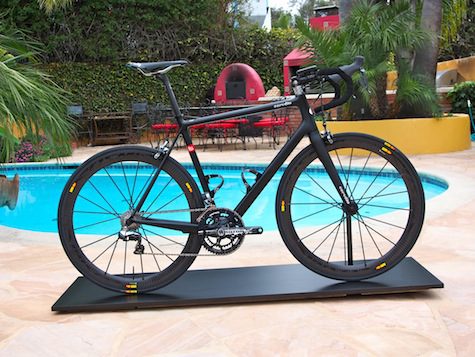

Two weeks ago Cervelo invited select media outlets, including Canadian Cycling, to see the latest out of its California R & D facility, a new frame set dubbed the Rca. If you are interested in finding out more about the Rca, as well as Cervelo’s other models, please join us on Wednesday March 27th at 1:30pm EDT for a live chat with Cervelo’s Aerodynamicist Ivan Sidorovich.
A New Project California
When the original R5ca was launched in 2010, it was the first showcase from Cervelo’s California research and development facility and it immediately drew attention. First, for the then eye-popping sub 700g frame weight, and second for the eye-watering $10,000 (US) asking price for a frame set alone.
The reasons for both the light weight and the high cost were that R5ca’s are hand-built by the engineers at the facility rather than a production factory in Asia, allowing greater precision with the placement of the carbon-fibre layup, requiring less material and yielding a lighter, yet stiffer frame. This approach adding significantly to the labour and production costs.
With the know-how gained from the R5ca, Cervelo spun its design features into the R5 and R3 series, regular production frames from Asia that are heavier but less expensive than the California Project versions.
Although no one has bested the R5ca since its launch, the competition is catching up to its weight and stiffness advantage. Cannondale’s Super Six Evo, Trek’s new Madone and Ridley’s new Helium, among other bikes, hover at around 700g. The new Rca is Cervelo’s response to the increased competition.
Aerodynamic Frontier
Cervelo is known for its design nous when it comes to aerodynamics, as evidenced by the success of its time trial bikes and the aero focus S-series. But the R-series, including the original R5ca, have always been explicitly about maximum stiffness for minimal weight. Aerodynamics performance were not a design consideration.
But when Cervelo took a bunch of road bikes into the tunnel for research and comparison, they made a surprising discovery. The rounded rectangular tube shapes used in the R-series that Cervelo calls Squoval, performed surprisingly well in the tunnel. According to Cervelo’s co-founder Phil White, “if you smooth (radius) corners and bow out the walls slightly, it improves aerodynamically,” counter-intuitively out performing traditional round tubes frame sets.
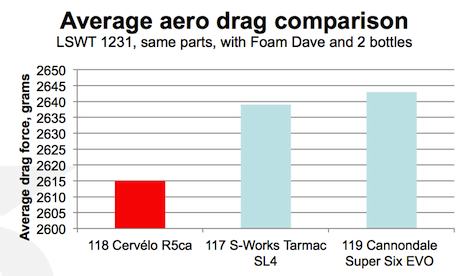
This discovery led to the design brief of the new Project California: improve upon the aerodynamics performance of the original R5ca while maintaining its weight and stiffness. A goal that White admitted, “was a real challenge. There was a lot of discussion of how can we possibly ask the (design team) to make something that is lighter and stiffer and also build in the aerodynamics? Those are just two things that generally pull you in different directions. Aerodynamics pulls you into a narrower frame with a nice long chord, and it’s the exact opposite for high stiffness and lightweight frame.”
To meet that challenge, the design team took on an exhaustive design process that took into consideration the contradictory demands. Using high power FEA (Finite Element Analysis) software to strip away excess material, and CFD (Computational Fluid Dynamics) software to massage the shapes, Cervelo’s team of designers went through 93 different virtual frames before settling on the final shapes that balance aerodynamics without compromising stiffness or weight.
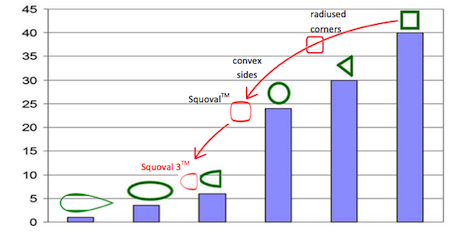
The result is a claimed 7.4w improvement over the original R5ca, while dropping the claimed frame weight marginally to 667g (Size 54cm) and maintaining virtually the same stiffness.

Visually, there are few obvious signs of aerodynamic shaping, there’s no deep air foil tubing or cut-outs shielding the rear wheel. Closer inspection of the Squoval 3 tubing however, reveals a slight necking of the head tube and rounded leading edge on the seat tube and the lower portion of the downtube with forming cross section shape like a D which is essentially a version of truncated airfoils. The small oval seat stays have also been turned 90 degrees from the R5ca to present a thinner profile to the wind.
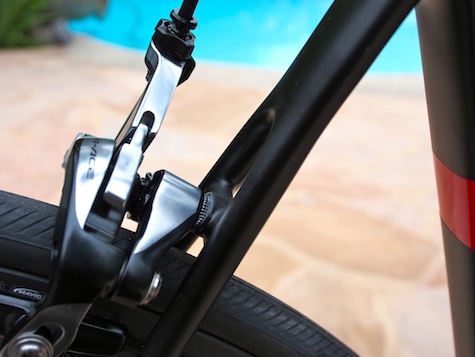
The downtube in particular received a lot of attention, utlizing what Cervelo calls the “Aerozone” concept. According to the Rca’s lead designer David Killing, the top portion of the downtube is critical to lateral and torsion stiffness and is also an area that is in the draft of the wheel and fork, therefore they have chosen to maintain a more traditional box cross section there for stiffness at a small aerodynamic penalty. While lower portions of the down tube, which is less critical to stiffness and sees more of the wind, receive the new Squoval 3 truncated airfoil.
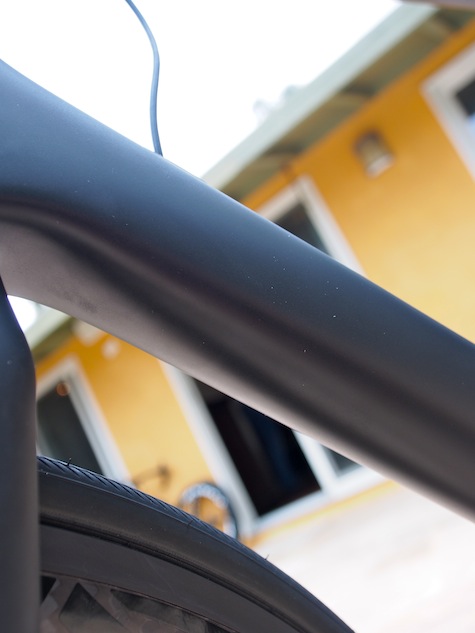
Tough New Steerer
The focus of the new Rca is not just about aerodynamics and light weight, Cervelo also paid attention to durability and end-user friendliness. The most obvious example is the PowerMetal Nanovate coating on the carbon steerers of Rca forks. The new process permanently bonds a microns- thin coating of nickel to the outside of the carbon steerer, a place that sees a lot of stress in normal use as well as during transport. The nickel coating makes the carbon steerer resist cracking under excessive clamping force while maintaining the light weight of carbon. This feature is one that White is particularly pleased with. “This is the one that will have the greatest influence across the model line,” he went on to explain, “we worked for two years with the company that developed it so that it is not just a cosmetic coating, it is actually part of the carbon.”

The cable routing is another area showing how Cervelo’s designers carefully considered end-user friendliness. The internal cable routing features large openings that are made mechanical- or electronic-shifting compatible simply by switching the port coverings.
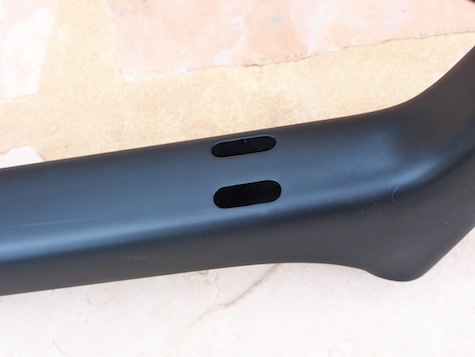
The Rca even features a permanently bonded magnet in the bottom bracket, conveniently located for crank based power meter users, removing the need to attach one to the outside of the frame.
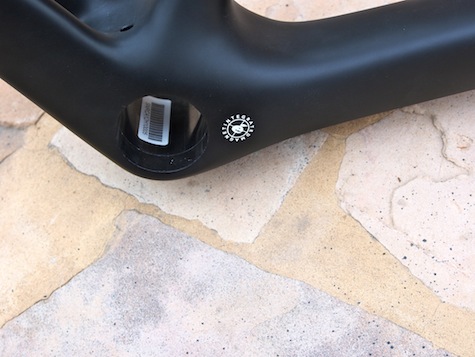
Initial Ride Impressions
For the Rca, Cervelo stuck with the tried and true geometry of its current line up of R and S-series bikes which have a nice blend of stability and sharp handling in corners.
After a limited initial ride on unfamiliar roads on a frame one size larger I usually ride, it’s impossible to speak definitively about the ride characteristics of the Rca. But one thing that jumped out immediately for me was its lightness, even though it was dressed with relatively standard high-end parts.
It was a pleasure to climb on the Rca, despite my winter legs unused to the length and steepness of the canyons on the California coast. This was particularly noticeable when climbing out of the saddle when the lightness of the Rca made it easy to flick the bike side-to-side in rhythm. Nor did my low-cadence climbing reveal any give from the bottom bracket and chainstay area.
For the relatively short 65km test ride, the Rca more than lived up to the weight, stiffness and comfort claims made by Cervelo. Aerodynamics are hard to evaluate without a wind tunnel, but given Cervelo’s reputation as a leader in that sphere, the relatively modest claims are likely to be accurate.
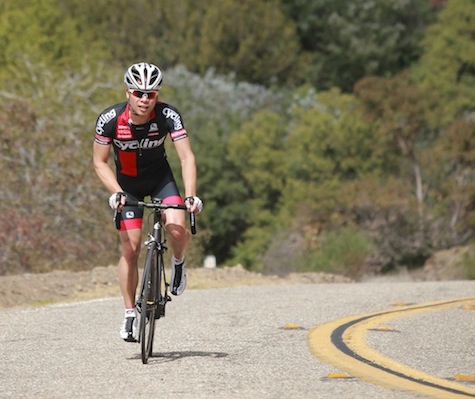
For the New Project California, Cervelo has once again set new standards in terms of stiffness and weight, while also incorporating aerodynamic enhancements. But at $10,000 for frame only, and with only 325 bikes slated to be produced, the Rca will be for the exclusive few with the means and the desire. However, Cervelo has always intended its California facility to be an R & D lab rather than a factory. The frame shape and features developed in the Rca will no doubt make its way into future Cervelo models at a more attainable bracket for the rest of us.
